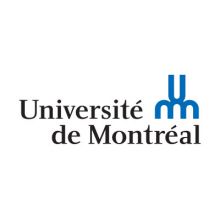A global shift towards open-access publishing is opening up new types of inequality within academia, according to research that highlights institutional “stratification” in publishing access outcomes.
“Authorial and institutional stratification in open access publishing: the case of global health research”, published on PeerJ last month, offers evidence of a class division between universities, whereby researchers from lower-ranking institutions with fewer resources are often left with little choice but to publish in closed-access journals because they cannot afford to pay the article-processing charges associated with open-access alternatives.
Using a database of 1,352 articles published in global health research between 2010 and 2014, a group of researchers from universities in Canada and the Netherlands examined the relationship between each academic author and their choice of publishing options when compared with their institution’s place in the Times Higher Education World University Rankings.
They found that authors working at lower-ranked universities were more likely to publish in closed journals behind a paywall and less likely to choose publishers that levied a standard article-processing charge for gold or hybrid open access.
Academics from higher-ranked institutions were found to pay relatively higher fees for gold and hybrid open-access publications.
This could be attributed to the tendency for those affiliated with more prestigious, cash-rich universities to have access to greater resources, allowing them the luxury of choice when it came to publishing in journals, the study says.
As a consequence, the researchers suggested, this was leading to “new professional hierarchies” developing in contemporary publishing as open-access models become more popular.
“New axes of stratification are emerging in academic publishing, adding to the already complex tapestry of inequality in science,” the paper concludes.
The authors acknowledge that their findings might initially seem counter-intuitive because traditional subscription-based journals are typically more prestigious, but they suggest that the resources available to “high-status” individuals mean that they are “sometimes prone to being early adopters”.
Lead author Kyle Siler, a social science researcher from Utrecht University, said that although class divides in scientific publishing were nothing new, a growing number of universities were finding themselves in an “awkward position” as they faced the impending transition between traditional subscription-based and open-access publishing models.
“Less wealthy universities are less likely to be able to offer their faculty OA publishing options because their budgets are already stretched,” he told THE. “Even if [those institutions] have stable funding for open-access publishing options, I think it will be a challenge for pricier journals to make themselves accessible to them, both through waiver funds and marketing.”
“An implication of [this] is that economic exclusion shifts from reading – for example, when universities can’t afford subscriptions to all journals – to publishing, raising the ethical question of which type of exclusion is less pernicious.”
Reducing or eliminating the “substantial profit margins” of for-profit publishers could make way for “a more affordable, accessible [and] efficient system, whether subscription-based or open access,” Dr Siler continued. “As scientists, we need to create and negotiate a better economic system to publish and curate our work.”
Register to continue
Why register?
- Registration is free and only takes a moment
- Once registered, you can read 3 articles a month
- Sign up for our newsletter
Subscribe
Or subscribe for unlimited access to:
- Unlimited access to news, views, insights & reviews
- Digital editions
- Digital access to THE’s university and college rankings analysis
Already registered or a current subscriber? Login












